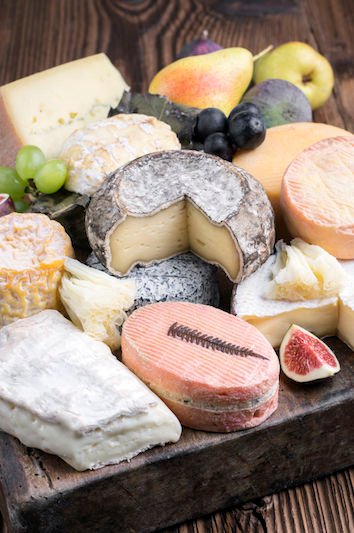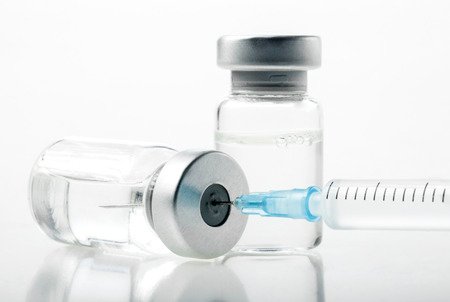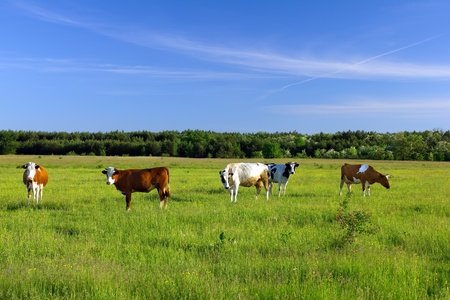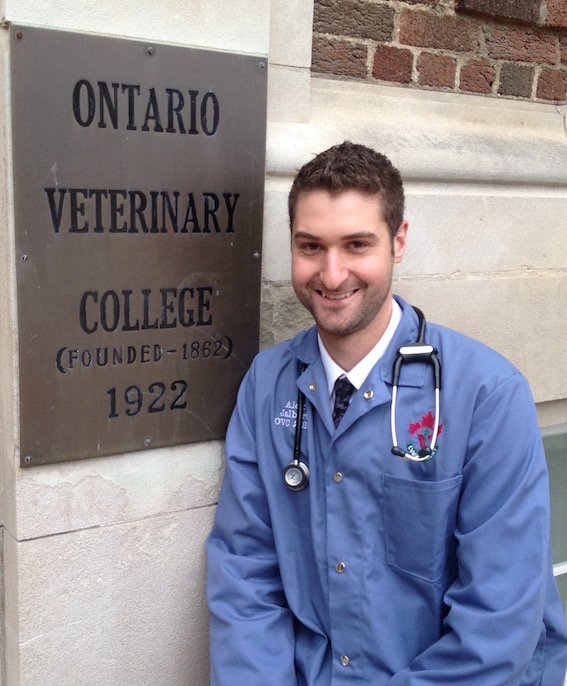The Scoop on Organic Dairy: Should You Change Your Buying Habits?

This post is the first in a series on organic foods. Today we'll compare the nutrition content of organic and conventional dairy products. We'll also take a look at antibiotic use and animal welfare conditions on organic and conventional dairies. The goal of this post is to help you, the consumer, decide if you should be buying organic or not.
Nutrition Organic milk contains more conjugated linoleic acid (CLA), a type of fat which some scientists think has anti-cancer properties. Organic dairy products also have more omega-3 fats than conventional ones. However, since dairy products are generally low in both these types of fat, buying organic probably won't make you any healthier. Plus, the difference in omega-3 and CLA fats is simply because organic cattle consume more fresh forage directly from the pasture. So, get a few weeks of bad weather with muddy pastures and farmers keeping their cows inside, and your extra CLA and omega-3's just disappeared. Score: A tie. Organic milk isn't more nutritious.

Antibiotic and hormone content The use of antibiotics on dairy farms is tightly controlled, whether the farm is organic or not. Veterinarians and farmers have a very good idea of how long it takes for cows to eliminate drugs from their system. So, when a farmer treats a cow with antibiotics, the milk and carcass of that cow cannot be used for human food for a certain time, until the cow gets rid of the antibiotic. This is called the milk withdrawal or meat withdrawal, as the case may be.
In the United States, organic dairy cows that are treated with antibiotics automatically lose their organic certification. As we shall see later on, there is some evidence to suggest that some dairy farmers may choose not to treat cows because of this, even when it would be the right thing to do. In Canada, some antibiotics are allowed to be used in organic production, but the milk withdrawals are twice as long and the cow's meat cannot be sold as organic later on.
Antibiotic residues in conventional milk are normally tested for at processing plants, so the chance of consuming antibiotics in conventional products are next to none. For added safety, you could go organic, but it's not likely to make a huge difference, since conventional milk already doesn't have antibiotics in it. On the issue of hormones, the U.S.A. does allow BST (bovine growth hormone) to boost milk production in conventional cows; however, many stores won't carry milk produced with BST, and this particular hormone doesn't make it into milk anyways. So it's highly unlikely to affect human health, even though it can affect bone strength in cows receiving it. Score: Conventional 0; and a tentative +1 to organic.

Animal Welfare This is a huge point to consider, as the organic industry has positioned itself as being cleaner, greener, and friendlier to animals. On the last point, the jury is still out. Lameness (difficulty walking) tends to be lower on organic farms, but the range of lameness on organic farms is huge. One of my professors used to say that if he put our heads in the freezer and our feet in the oven, "on average", we'd be comfortable. It's the same with lameness in organic herds: on average, it's lower, but there are still herds that have an unacceptably high amount of lame cows (around 30% in the U.K.). So it's up to you, as a consumer, to decide if you want to pay more for claims of better welfare that aren't solidly and consistently backed up so far.
Also, some European studies suggest organic dairy cows are often sent to the slaughterhouse because they have potentially treatable mastitis (mammary infections). For an American farmer, the cow would lose organic status by treating with antibitics. So, witholding treatment is one way to still get an organic premium on a cow's carcass when it's slaughtered. For a Canadian farmer, they would be unable to use milk from that cow for human food for quite a while, so it would be a significant economic loss as well. While there aren't many "official" numbers on how many organic farmers withold treatment, I have seen it done in Canada, so I do know that it is a problem. We really should ask ourselves if it's better for the animal to be killed instead of treated, simply because of a rulebook.
On the other hand, because organic cows produce less milk, they tend to have mastitis less often than conventional cows. But, it is a toss-up considering that a case of mastitis can mean an early, potentially unjustified trip to the butcher shop. Score: Conventional 0; Organic -1. It's kind of false advertising to tell everyone your cows are more comfortable, all while slaughtering them for treatable infections and still having inconsistent improvements in lameness. And, it just adds insult to injury when you charge more for it.
The verdict: Organic milk doesn't really provide better nutrition. Also, it likely isn't more antibiotic-free than conventional milk, which doesn't contain antibiotics to begin with. While growth hormone can be used in the United States, it doesn't make it into milk, so it doesn't affect human health. It can, however, mess with bone strength of cows, so it is an animal welfare concern. On the other hand, organic cattle still have a high rate of lameness, and sometimes are slaughtered instead of treated. So, at the end of the day, it's hard to argue that organic dairy cattle have a much better state of welfare than conventional cattle. So all things considered, I'll stick to buying conventional milk for the time being – especially on a student budget.
About myself: I am currently studying veterinary medicine, after obtaining a degree in agricultural science. I am interested in everything agri-food, and I love talking about current problems, ideas and controversies in farming. In my spare time, I enjoy gardening, sports, playing the violin, and throwing shade on scientists who lack common sense.

Thanks a lot for sharing those pieces of information in such an objective way. It is good to read something which is not ### is good or ### is evil
My pleasure! I'm glad you enjoyed it. It is great communication practice for my future professional life, that's for sure!
My wife worked for an organic dairy for about 2 years and I don't think they usually killed any cows with mastitis. She said they could sometimes clear up the infection by just milking the cow separately. If that didn't work, they would treat it with conventional antibiotics and then sell it to a conventional dairy once it was healed.
In regards to the lameness issues, I think a lot of that has to do with where the cows live. Do you have a feed lot or do they spend most time out on pasture? The dairy my wife worked was had the cows on pasture most of the year and they had very little lameness.
I still buy conventional milk most of the time, but every once in a while I will buy organic. My wife will only drink organic though because she doesn't like the taste of conventional milk and it doesn't make her feel good. That might also be due to some other differences though, such as the breed of cow and whether the milk is homogenized or not. The organic milk we buy is usually from Jerseys and it's never homogenized, while the conventional milk is homogenized and comes from Holstein cows.
@soaringeagle: these are excellent points. Half of mastitis cases usually resolve on their own without antibiotics, so it's not an entirely "wrong" strategy to wait it out and see what happens. But, in the meantime, cows are in pain and that's not good.
As far as lameness goes, cows are less lame on pasture, slightly more lame in a freestall, and definitely more lame in a tiestall (can't expect much else when you don't move around). However, the research is very clear on one point: the biggest problem with lameness is that farmers don't recognize it. So, only the severe cases get noticed and treated. Farms with "little lameness" often have a much bigger problem with milder cases that simply go unnoticed. I am not insinuating that this is the case on the farm your wife worked at. I am just pointing out that pasturing doesn't eliminate lameness, if you have other causes on your farm. Pasturing provides exercise, but it can't really undo the ill-effects of a poorly designed barn. This is especially important to consider in northern climates where organic cattle spend much more time inside in the winter.
Furthermore, one British study found that 37% of organic cows had hock lesions - anything from a scruff mark to full-on bulging inflammation on their "knee" joints. I think an industry who uses animal welfare as a huge selling point can do much better than having over a third of their cows walk on abraded/uncomfortable/injured joints.
That's interesting about your wife reacting differently to conventional and organic milk. It's not the first time I have heard about it though. Maybe if I get enough upvotes on my writing I can do a PhD on the subject ;)
Thank you for sharing with us, awesome stuff! always like reading stuff about food, you might like my blog as well :)
Thank you! I shall check it out for sure.
I'm a huge fan of those post of your, I'm now following :-)
Thanks!
I was on a tour of Arizona agriculture a few years ago, for work. We went to a large dairy farm. There were two parts: one that was a conventional dairy and one organic. They looked exactly the same -- an endless sea of holsteins standing on concrete platforms all day. The dairy managers were so proud that they had an organic operation, too. It was really something.